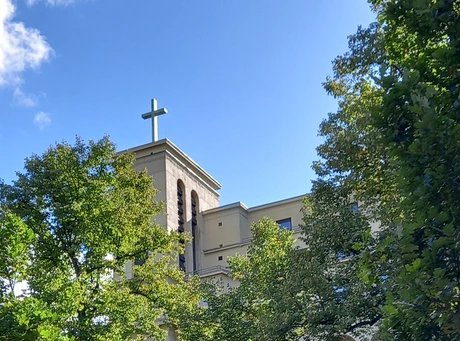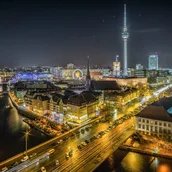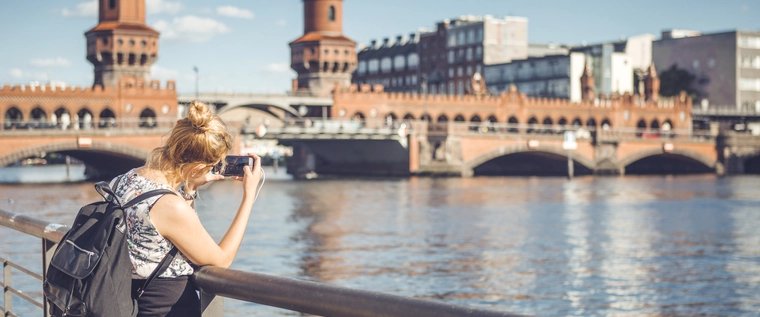
with city guide Marianne Mielke
‘Castle, park, working-class neighbourhood’ – An encounter with art, history, architecture and Charlottenburg's ‘Red Island’.
Walking from Sophie-Charlotte-Platz along Schloßstraße to Charlottenburg Palace, which Electress Sophie-Charlotte had built as a retreat, it is difficult to imagine that this area was once covered by the meadows and fields of the village of Lietzow. The rural character only changed in the mid-19th century, when industrialisation made it necessary to create housing for a rapidly growing working class in Charlottenburg.
The neighbourhood around Friedrich-Karl-Platz, today's Klausenerplatz, was created. All the streets in the neighbourhood were lined with tenement buildings, whose backyards often housed craft workshops, haulage companies, cowsheds or actual factories. The traditional Engelhardt brewery brewed its ‘Charlottenburger Pilsener’ in Danckelmannstraße until 1983, and there was a sausage factory in Knobelsdorffstraße.
In the block between Sophie-Charlotte-Straße, Schloßstraße, Knobelsdorffstraße and Spandauer Damm, 30,000 people soon lived in cramped conditions, some of which were unacceptable.
The neighbourhood became a stronghold of the SPD and KPD, and thus part of ‘red Berlin’. In the early 1930s, there were repeated street fights between socialists, communists and the storm troopers of the NSDAP, who carried out raids on ‘little Wedding’ – as the neighbourhood was also known.
In the 1970s and 1980s, resistance arose when tenants fought to keep their flats and against the wholesale redevelopment of their neighbourhood. They received support from architect Hardt-Waltherr Hämer, who proved in an expert report that renovating and modernising old buildings is much cheaper than demolition and new construction. His concept of ‘careful urban renewal’ was successfully implemented and paved the way for further construction projects in Berlin.
Right now, the people in the neighbourhood are burning with one question: what will happen to St. Kamillus Church on Klausener Platz? The daycare centre and retirement home in the building have already closed, and the church will close on 31 December 2025. The future of the church property is uncertain.
The city walk will be held in German.
#museumsviertelcharlottenburg
Additional information
Meeting point: Käthe Kollwitz Museum, foyer
Price info: Participation fee: 8 euros / reduced rate 5 euros
Booking: Registration required:
by email to presse@kaethe-kollwitz.de
or by telephone on 030-882 52 10
Price info: Participation fee: 8 euros / reduced rate 5 euros
Booking: Registration required:
by email to presse@kaethe-kollwitz.de
or by telephone on 030-882 52 10
Dates
October 2025
| Mo | Tu | We | Th | Fr | Sa | Su |
|---|---|---|---|---|---|---|
1
|
2
|
3
|
4
|
5
| ||
6
|
7
|
8
|
9
|
10
|
11
|
12
|
13
|
14
|
15
|
16
|
17
|
18
|
19
|
20
|
21
|
22
|
23
|
24
|
25
|
26
|
27
|
28
|
29
|
30
|
31
|



